
учебник 3 курс ICT
.pdf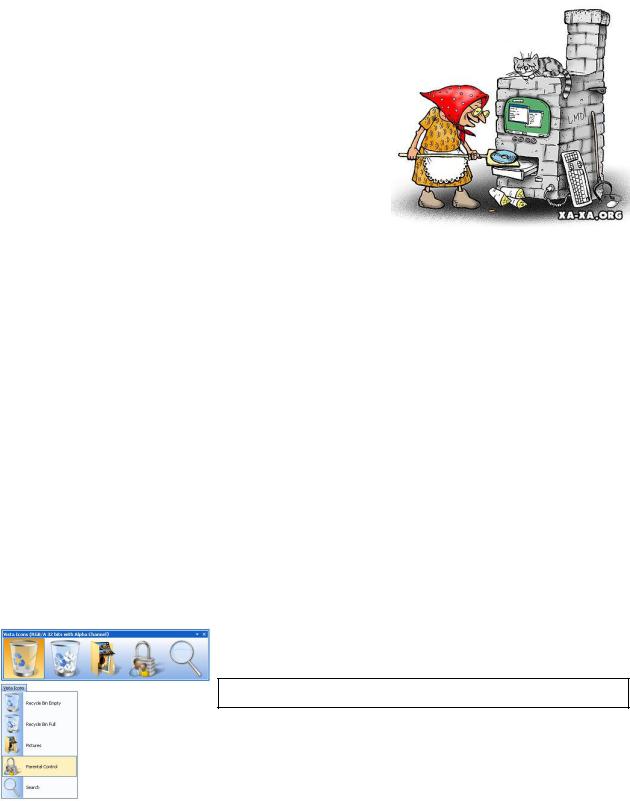
3. Make two-word expressions by combining words from the two columns. Then match these expressions with the appropriate phrase.
1. |
work |
a. |
system |
2. |
user |
b. |
scheduling |
3. |
system |
c. |
tasking |
4. |
operating |
d. |
processing |
5. |
batch |
e. |
software |
6. |
device |
f. |
utilities |
7. |
application |
g. |
interface |
8. |
multi- |
h. |
driver |
1. |
Running several programs at the same time in an efficient manner. |
2. |
A group of computer programs that help manage the computer's resources, acting as an interface |
between the computer and application programs. |
|
3. |
Routine used to interface and manage a peripheral. |
4. |
Small programs which improve a system's performance and help users. |
5.The way people interact with computers.
6.Computer software that is designed for a particular use or user.
7. Planning particular tasks to be performed by a computer at particular time.
8. A type of computer system in which the computer does several jobs one after the other, without needing instructions between each job.
4. Complete the texts using the words in the boxes.
Operating systems
control functions MS-DOS software version Windows
MS-DOS is operating system 1 … developed by Microsoft that controls and co-ordinates the basic 2 … of your computer. If you are using Windows 95 or a later 3 … of
Windows, the functions of MS-DOS have been integrated. If you are using Windows 3.1x or do not have 4…, then you are relying on 5… (or a similar product from IBM called PC-DOS) to 6… the computer.
111
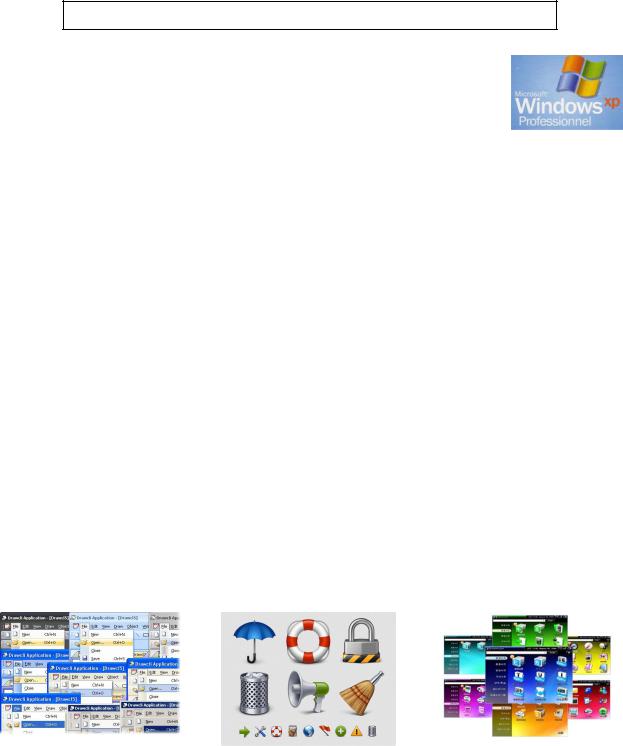
commands |
icons |
Microsoft |
mouse |
multitasking |
user |
Windows is a 7 … graphical 8 … interface for the IBM PC developed by 9 …
Corp. that is designed to be easy to use. Windows uses 10 … to represent files and devices and can be controlled using a 11 … , unlike MS-DOS which requires 12 … to be typed in.
filenames |
interface |
Internet memory |
networks |
processor |
|
|
|
|
|
Windows 95 provides support for long 13 …, an 14 … that's easier to use and better support for 15
… and the 16 … It does, however, require a faster 17 … and more 18 … to get good results - an absolute minimum of 8Mb and a fast 80486 are required.
communications |
configure |
enhanced |
features |
version |
|
|
|
|
|
Windows 98 is an 19 … 20 … of Microsoft's Windows 95 that provides more 21 … and internet 22 … and is easier to use and 23 … .
KEY INFORMATION SECTION 3
The Graphical User Interface
The term ‘user interface’ refers to the standard procedures the user follows to interact with a particular computer. A good user interface is important because when you buy a program you want to use it easily. A few years ago, the way in which users had access to a computer system was quite complex. They had to memorize and type a lot of commands just to see the content of a disk, to copy files or to respond to a single prompt. So, a user interface based on graphics and intuitive tools was designed with a single clear aim: to facilitate interaction with the computer.
Nowadays most computers have a Graphical User Interface (GUI). It is a type of user interface which allows people to interact with electronic devices such as computers; hand-held devices such
112

as MP3 Players, Portable Media Players or Gaming devices; household appliances and office equipment.
A GUI makes use a WIMP environment: Windows, Icons, Menus and Pointer. This type of interface is user-friendly, where system functions are accessed by selecting self-explanatory icons and items from menus. A GUI offers graphical icons (graphic images (or intuitive symbols) representing programs, documents, an object or task), and visual indicators (as opposed to textbased interfaces), typed command labels or text navigation to fully represent the information and actions available to a user. A graphical user interface saves a lot of time: you don't need to memorize commands in order to execute an application; you only have to point and click so that its content appears on the screen.
Command Line Interface - CLI
Static, Direct, Recall.
Graphical User Interface - GUI
Responsive, Indirect, Recognition.
Natural User Interface - NUI
Evocative, Contextual, Intuition.
Double-clicking an icon opens a window that lets you work with different tools and menus. A
window is a viewing area of the computer screen where you can see the contents of a folder, a file, or a program. Some systems allow several windows on the screen at the same time and windows can overlap each other. The window on the top is the one which is "active", the one in use. By using different windows you can work on several documents or applications simultaneously.
The |
actions |
are usually |
performed through direct |
manipulation |
of the graphical |
elements by the means of a |
|
drop-down menu, pop-up menu or pull-down menu (a |
|||
list |
of options that appear below a menu bar when you click |
||
on an item). The tool for these manipulations is the pointer.
The pointer is the arrow, controlled by the mouse, which allows you to move around the screen and choose options from menus. You operate the menu by pressing and releasing one or more buttons on the mouse. Toolbar buttons are found at the top of a window, they take you to the Home folder and others. The dock is a set of icons at
the bottom of the screen that give you instant access to the things you use most. When information has to be given to the user or input by the user, a window known as a dialog box is often used. It
113
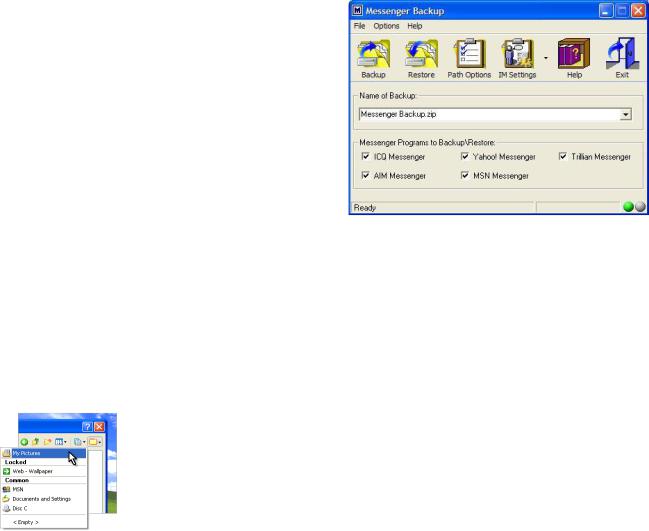
can contain a variety of elements to gather information from the user including: text boxes, dropdown list boxes, checkboxes and command buttons. A find dialog box is used to gather information from the user about the files they wish to find. All these activities take place on a desktop (the background screen that displays icons, representing programs, files and folders- directories or containers for documents and applications).
Today, the most innovative GUIs are the Macintosh, Microsoft Windows and IBM OS/2 Warp. These three platforms include similar features: a desktop with icons, windows and folders, a printer selector, a file finder, a control panel and various desk accessories. Double-clicking a folder opens a window which contains programs, documents or further nested folders. At any time within a folder, you can launch the desired program or document by double-clicking the icon, or you can drag it to another location. The three platforms differ in other areas such as device installation, network connectivity or compatibility with application programs.
VOCABULARY PRACTICE SECTION 3
1. What do the following stand for?
1. GUI
a.graphic user interface
b.graphical user interface
c.graphical users interface 2. OS
a.operating system
b.operation system
c.operating systematization 3. WIMP
a.windows, information, menus, pointer
b.windows, icons, memory, pointer
c.windows, icons, menus, pointer
2. Decide which of the expressions below best describe a graphical user interface (GUI).
user-friendly |
slow |
attractive |
text-based |
complex |
graphics-based |
114

3.Which elements of a GUI would you need to click on to carry out the following tasks?
1.To open a letter that you‘d been writing in Word.
document icon / program icon
2. To launch your internet browser software. folder icon / program icon
3.To move up and down through a window. drop-down menu / scroll bar
4.To restart or shut down your computer. menu bar / hard drive icon
5. To find out how much space is left on your C: drive. program icon / hard drive icon
4. Identify these interface elements of Apple Macintosh programs.
5. Complete this extract from a wiki entry about Windows Vista.
improvement visual developed vulnerability tools networking viruses features
Windows Vista is an operating system 1….. by Microsoft for use on personal computers. Development was completed on November 8, 2006; over the next three months it was released in stages to computer manufacturers, business customers, and shops. On January 30, 2007, it was released worldwide to the
115

general public, and was made available for purchase and download direct from Microsoft. The release of Windows Vista comes more than five years after the introduction of Windows XP.
Vista contains hundreds of new and improved 2…... The most significant include an updated GUI and 3….. style called Windows Aero, improved search features, new multimedia creation 4….., and completely redesigned 5….., audio, print, and display sub-systems. However, perhaps the greatest
6….. has been to security. Windows XP suffered from 7….. to 8….. and malware, and it will be interesting to see to what extent this has been addressed in Vista.
GRAMMAR PRACTICE SECTION
Articles: a/an, the
1. Match the sentences with the explanations.
1.My friend is a system administrator.
2.Can you pass me a CD from that box by your side?
3.We must have a meeting in the IT department.
4.Windows 2000 is a very good program.
5.The information about this program gives us the chance to be the best.
6.Where is the laptop?
7.I really admire the Japanese for their IT development.
8.This is the best and the newest model of computers in the market.
a.We use a/an to describe something.
b.We use the, if we know which one, as it was mentioned before or it is clear from the situation.
c.A/an mean ―one‖, so we cannot use a/an with
plurals or uncountable nouns. The is possible.
d. We use a/an to refer to one of a group of things. e. We use the with nationalities and other groups.
f.We use the with superlatives.
g.We use a/an to refer to something for the first time.
h.We use a/an to describe someone‘s job, but not areas of business.
2. Decide if these words (which appear in Exercise 5 of Vocabulary Practice Section 3) are countable or uncountable, depending on how they are used in this context.
1.development
2.public
3.security
4.vulnerability
5.malware
116

3. Fill in the gaps with „a/an‟ or „the‟ where necessary.
Breaking Windows
―Google takes its rivalry with Microsoft a step further‖
(1) … announcement came as (2) … humble blog post on
Google‘s corporate website. By promising to launch a free operating system for personal computers (PCs) later this year, (3) … online giant is mounting a direct attack on Microsoft and its dominant Windows operating system. TechCrunch, a technology blog, reported the news as
―Google Drops A Nuclear Bomb On Microsoft‖.
The bomb has a very long fuse, however. (4) … first machines running Chrome OS, as the new software is to be called, will not be available until late next year. (5) … initial version will only be suitable for netbooks, small, cheap laptops that have proved popular of late. The idea is to provide
(6) … compact and simple-to-use operating system that boots up in a few seconds and works securely and easily with (7) … web-based applications, such as social networks and online e-mail.
(8) … software will combine Linux, the open-source operating system, with Chrome, Google‘s browser.
Microsoft has not yet officially responded. Windows Vista, (9) … most recent version of its operating system, has not been a success. Its forays into Google‘s main territory, (10) … web search and (11) … online advertising, have not brought (12) … big gains.
Yet it is much too early to count Microsoft out. It recently launched
Bing, (13) … new search service, which has been well received. In October, around (14) … time when Google will make Chrome OS available, Microsoft will release Windows 7, (15) … much-improved next iteration of its operating system. (16) … firm is also spending
billions of dollars on a ―cloud‖—(17) … global network of (18) … huge data centers—which will rival Google‘s infrastructure for web-based applications.
Will there be (19) … clear winner? Probably not in (20) … foreseeable future. That is (21) … good thing: the epic fight between the two giants promises to speed up innovation, which is what the recession-bound IT industry most needs.
117

READING PRACTICE SECTION
Windows 2000
1. Read the text and match a heading to a paragraph.
a.Ready for the Internet
b.Fast, secure and reliable
c.What‘s Windows 2000?
d.Built-in support for new devices
e.Easy to use
1 .........................................................................
Microsoft Windows® 2000 is the operating system for the next generation of PCs. It offers a user-friendly interface, NT technology, integrated web capabilities, and support for mobile computers and new devices. There are two
main Windows systems: Windows 2000 Professional for desktops and laptops, and Windows 2000
Server family for networks, |
web servers and high-performance |
workstations. |
2 ......................................................................... |
|
|
Windows 2000 includes a |
built-in safeguard called Windows |
File Protection, which prevents core |
system files from being deleted or changed by users or applications. If a system file is altered, this feature repairs that file avoiding many system crashing found in previous versions.
Windows 2000 is 25 percent faster than Windows 9x on systems with 64 MB and lets you run more programs and do more tasks at the same time than previous versions.
It protects your hard drive by using encryption and decryption systems. It also supports Kerberos, an Internet standard which protects corporate
networks or intranets.
3 .........................................................................
The graphical user interface has been improved. You can personalise the Start menu and display applications you use most often. You can use step-by-step wizards for numerous tasks. The Hardware Wizard lets users add and configure peripherals. The Network Connection Wizard helps you connect to networks. The Microsoft Installer helps you install, configure and upgrade software easily.
With IntelliMirror Technology, based on Active Directory service, desktop administrators can easily manage and back up user‘s data.
118
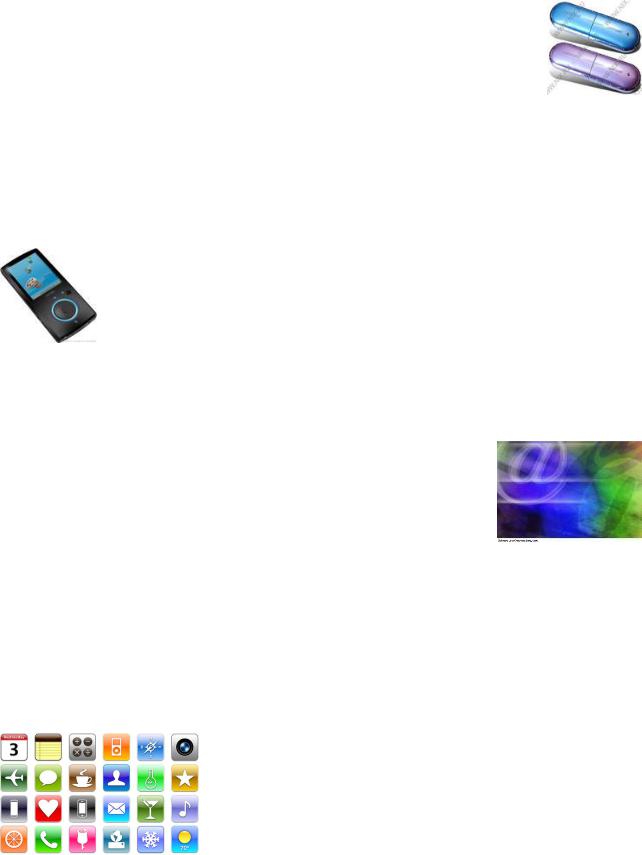
4 ........................................................................
With Internet Explorer integrated into the desktop, Windows 2000 allows you to search files and folders on your PC, find pages on your company intranet or surf the web.
Internet Explorer automatically corrects mistakes on common URL conventions such as http, .com and .org. It also lets you download complete web pages with graphics for viewing off-line.
NetMeeting video-conferencing software enables participants to talk to and see
each other, share programs and ideas. It supports Dynamic HTML and Extensible Markup Language (XML) which help programmers create new ways of exchanging and displaying information.
5 .........................................................................
It supports the latest technologies, from digital cameras and music players to USB devices. USB
(Universal Serial Bus) lets you easily connect and remove peripherals without configuring or rebooting your PC. It also offers support for storage devices such as DVD and Device Bay. Mobile users can share files between wireless devices (laptops or desktop PCs) through the IrDA (Infrared Data Association) protocol.
2. Read the text again and find:
1.the tool that protects important system files.
2.the protocol adopted for network authentication and security.
3.the web browser included with the operating system.
4.the Internet tool used to do video-conferencing.
5.the component that allows you to add and remove hardware devices without restarting the computer.
6.A popular infrared protocol used in wireless communication.
3. Vocabulary search. Find the words in the text that correspond to the following:
1. pieces of hardware |
6. improve |
a piece of software |
2. portable computers |
7. browse (the web) |
|
3. characteristic |
8. web address |
|
4. internal corporate networks |
9. restarting |
the computer |
5. set up a system in a particular |
10. without |
cables |
way |
|
|
119
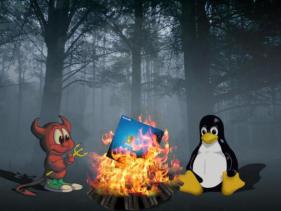
SPEAKING/WRITING PRACTICE
1. |
Find the information on the topics and make a report: |
|
1. |
Make a picture/a photo of interface elements |
and describe them. |
2. |
Give a description of some system utilities‘ |
functions. |
3.Using the Internet find two operating systems designed for hand-held devices such as laptops.
4.Describe the history, the usage and distribution of Microsoft Windows Operating System.
5.What and how connects Unix and Linux?
6.The creation of Apple. Its products and their usage.
7.Do Microsoft and Apple compete?
8.Self-explanatory icons. What are they?
9.Which operating system is the most user-friendly?
10.What is an interface in other spheres of life (e.g. human relationships)?
2. Your friend is going to buy a computer, but he doesn‟t know much about operating systems. Write an e-mail explaining why Windows is so popular.
FUN AND GAMES SECTION
1. Unscramble the letters to make words related to computer operating systems and then fit the words into the puzzle to read the hidden word. Give definitions to the words you have found.
1. |
OESPTKD |
2. |
EOITPRN |
3. |
YIIUTTL |
|||||||||||||||
4. |
AOARTLB |
5. |
OIAATPLPCN |
6. |
RREIVD |
|||||||||||||||
7. |
WOWIDN |
8. |
OINC |
9. |
EORDLF |
|||||||||||||||
|
|
1 |
|
|
|
|
|
|
|
|
|
|
|
|
|
|
|
|
|
|
|
|
|
|
|
|
|
|
|
|
|
|
|
|
|
|
|
|
|
||
|
|
|
|
|
|
|
2 |
|
|
|
|
|
|
|
|
|
|
|
|
|
|
|
|
|
|
|
|
|
3 |
|
|
|
|
|
|
|
|
|
|
|
|
|
|
4 |
|
|
|
|
|
|
|
|
|
|
|
|
|
|
|
|
|
|
|
|
|
|
|
|
|
|
5 |
|
|
|
|
|
|
|
|
|
|
|
|
|
|
|
|
|
|
|
|
6 |
|
|
|
|
|
|
|
|
|
|
||
|
|
7 |
|
|
|
|
|
|
|
|
|
|
|
|
|
|
|
|
|
|
|
|
|
|
|
|
|
8 |
|
|
|
|
|
|
|
|
|
|
|
|
|
|
|
|
|
|
|
|
9 |
|
|
|
|
|
|
|
|
|
|
|
|
|
120
